Hadrian's Wall is a colossal triumph of Roman engineering, an awe-inspiring 73-mile chain of thick brick that slices straight across the North East of England from Newcastle in the east through to Carlisle in the west.
Reaching a height of 3.5m–4.5m, it snaked its way from Bowness-on-Solway, Cumbria, to Wallsend, Tyne and Wear. During the succeeding centuries, much of the wall was plundered to build the surrounding farmhouses. Nevertheless, the central and most complete section continues to impress visitors.
In this guide to Hadrian's Wall, we reveal everything you need to know about the iconic British landmark, including where it is, when it was built, why it was built and the best ways to experience it.
Interested in discovering more landmarks in the British countryside? Check out our guides to lighthouses, battlefields and castles.
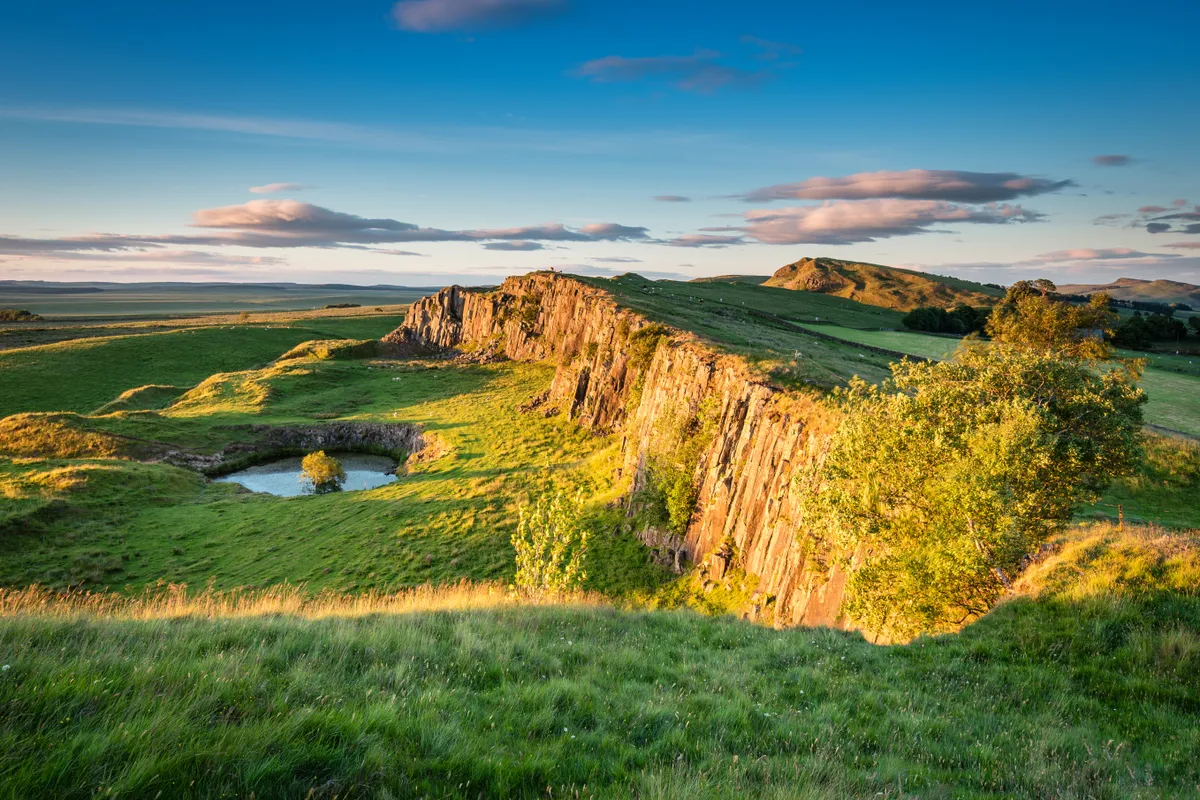
Where is Hadrian's Wall?
Hadrian's Wall slices straight across North East England from Newcastle in the east to Carlisle in the west.
One of the best places to experience the wall is from the Hadrian's Wall and Housesteads Fort National Trust visitor centre. To reach it by car, take the B6318 from Greenhead to the car park adjoining the National Trust visitor centre. By bus take the AD122 between Hexham and Carlisle, April-October.
When was Hadrian's Wall built?
Hadrian's Wall was built 2,000 years ago. The emperor, Hadrian, began construction of the wall in AD 122.
Best walks in Northumberland National Park
The darks skies, open moorland, wild woodland and splashing waterfalls of Northumberland National Park hug the border between England and Scotland – explore the park on foot with our favourite walks.
Who built Hadrian's Wall?
It took thousands of men eight years to build New York’s Rockerfeller Centre, and nearly 20 years for thousands more to build Shah Jahan’s magnificent love tomb the Taj Mahal. But it took only three legions of Roman soldiers, about 12,000 men, around six years to build Hadrian’s Wall – and they were wearing skirts and sandals.
And it’s all thanks to one emperor. Publius Aelius Hadrianus was the adopted son of Emperor Trajan. He was groomed for succession but like many a Roman emperor, his appointment was not smooth or necessarily approved of. He had four senators executed early in his reign for plotting treason.
Despite this, Hadrianus became known as one of the Five Good Emperors. His administration was very different to Trajan, who ruled with warfare and territorial expansion. Hadrian’s time in power was one of relative peace and consolidation. Almost immediately, he returned most eastern lands that Trajan had conquered because he believed that the empire was too big to defend.
Instead, he wanted to strengthen Rome’s frontiers – his greatest legacy to the empire. He used fortifications such as Hadrian’s Wall to mark a halt to imperial expansion. It is the largest ancient monument in northern Europe and standing alongside it you cannot help but feel the energy of the past flowing through it.
This must have been one of the least popular postings in the Empire. Apart from a brief foray into Scotland, Hadrian’s Wall marked the northern limit of power until the end of the fourth century AD, when the legions abandoned Britain.
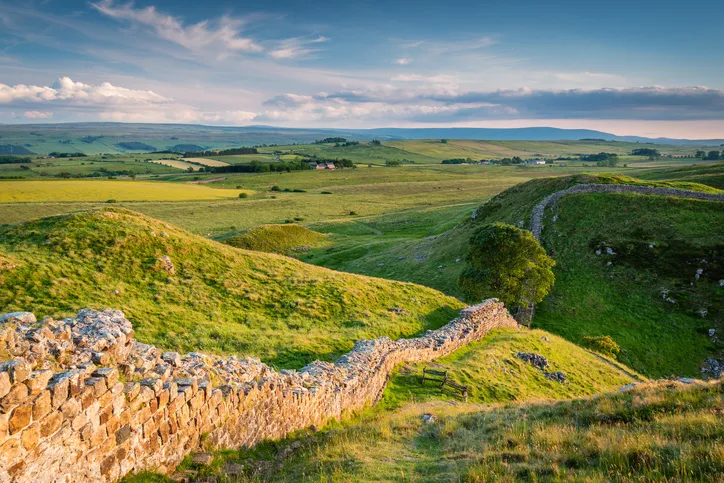
Why was Hadrian's Wall built?
Two thousand years ago, Emperor Hadrian ordered his legions to build this wall as a frontier. It was an early passport control that was well guarded. There were once over 30 forts on the frontier, including 16 along the line of the wall itself, which was once 4.5m (15ft) high and up to 3m (10ft) thick in places.
Several roads crossed the wall through a system of fortified gates. This allowed the army to control all trade with lands to the north, and extract taxes on goods moving in and out of the Empire. This chain of forts and watchtowers continued down the Cumbrian coast to the west, where the Roman Army was in charge of a number of ports.
This was a busy, noisy, multicultural zone occupied by soldiers and civilians from all over the Roman Empire. You can get a taste for the lives these people led at the nearby Vindolanda site, which features the uncovered remains of the fort barracks and bathhouses. It also houses one of the greatest Roman finds in Britain – 2,000 thin wooden tablets covered in spidery writing, covering all aspects of personal life, from parties to family matters. The Roman equivalent of Twitter, perhaps?
All along the wall, there are plenty of museums and sites, with dedicated staff re-enacting battles in full costume, and hands-on archaeological events that the whole family can get involved with.
Guide to Roman Britain
When the Romans occupied Britain in 43AD, they set about building cities, walls and hundreds of roads that we still use today. Our guide to Roman Britain explores the history of the Roman occupation, the impact on wildlife, plus the best Roman sites to visit in the UK.
How long is Hadrian's Wall?
Hadrian's Wall is an awe-inspiring 73-mile chain of thick brick that slices straight across North England from Newcastle in the east to Carlisle in the west.
Hadrian's Wall walks
These days you can witness the wonder of the wall in numerous ways. You can walk entire length of it on the Hadrian's Wall Path National Trail (84 miles), or you can amble from fort to fort, fort to port or around medieval town walls. There are at least 16 Hadrian’s Wall walks – here are three of our favourites:
Housesteads to the Twice Brewed Inn
6.2 miles/10km km | 4 hours | moderate (return)
The stretch of Hadrian's Wall from the ancient Roman fort of Housesteads – the most complete example of a Roman fort – down to the Twice Brewed Inn is one of the most spectacular sections of this wall.
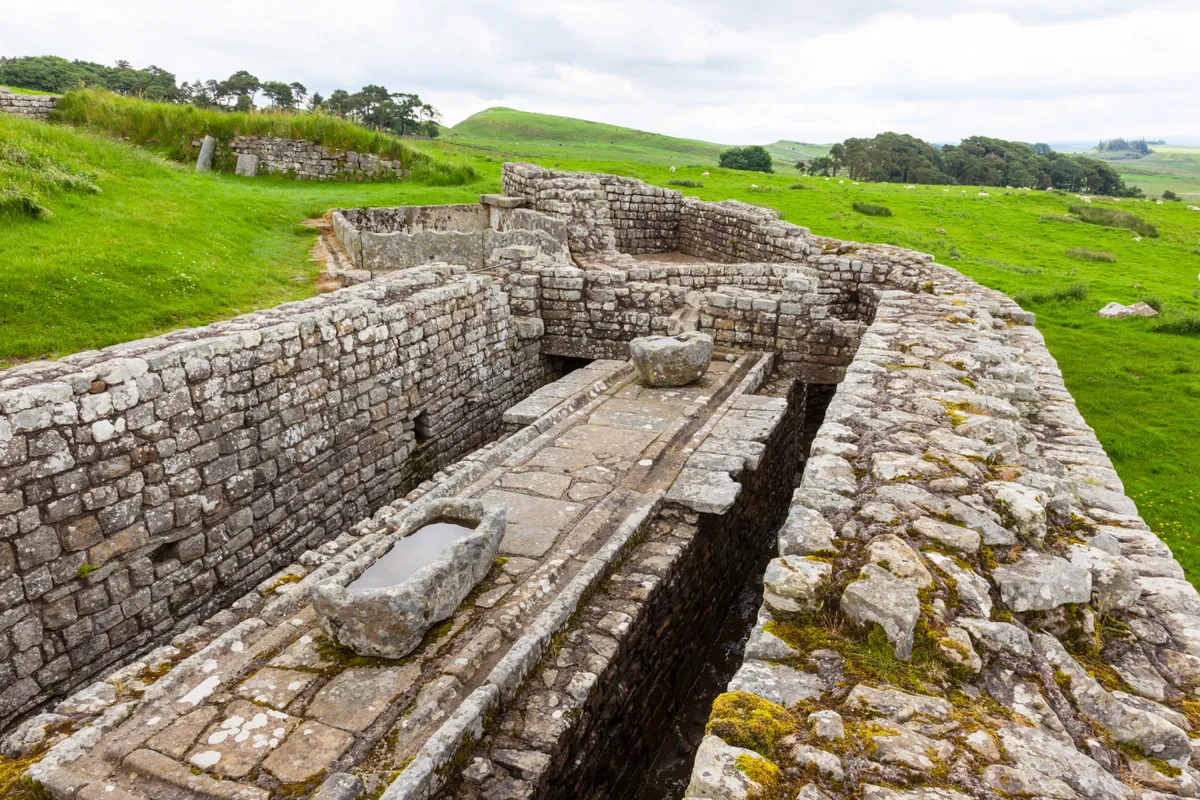
Peel Crags and Sycamore Gap
2.5 miles/4.1km | 1.5 hours | moderate
Embrace a romantic Roman hike along Hadrian’s Wall in Northumberland National Park before returning to the Twice Brewed Inn for a hearty pub feast.
There’s a steep climb up towards Steel Rigg, where the path cuts along the edge of the escarpment, the land falling away to boggy moorland. The path then lurches up and down to deposit you just east of Milecastle 39, at an exquisitely sheltered spot named Sycamore Gap.
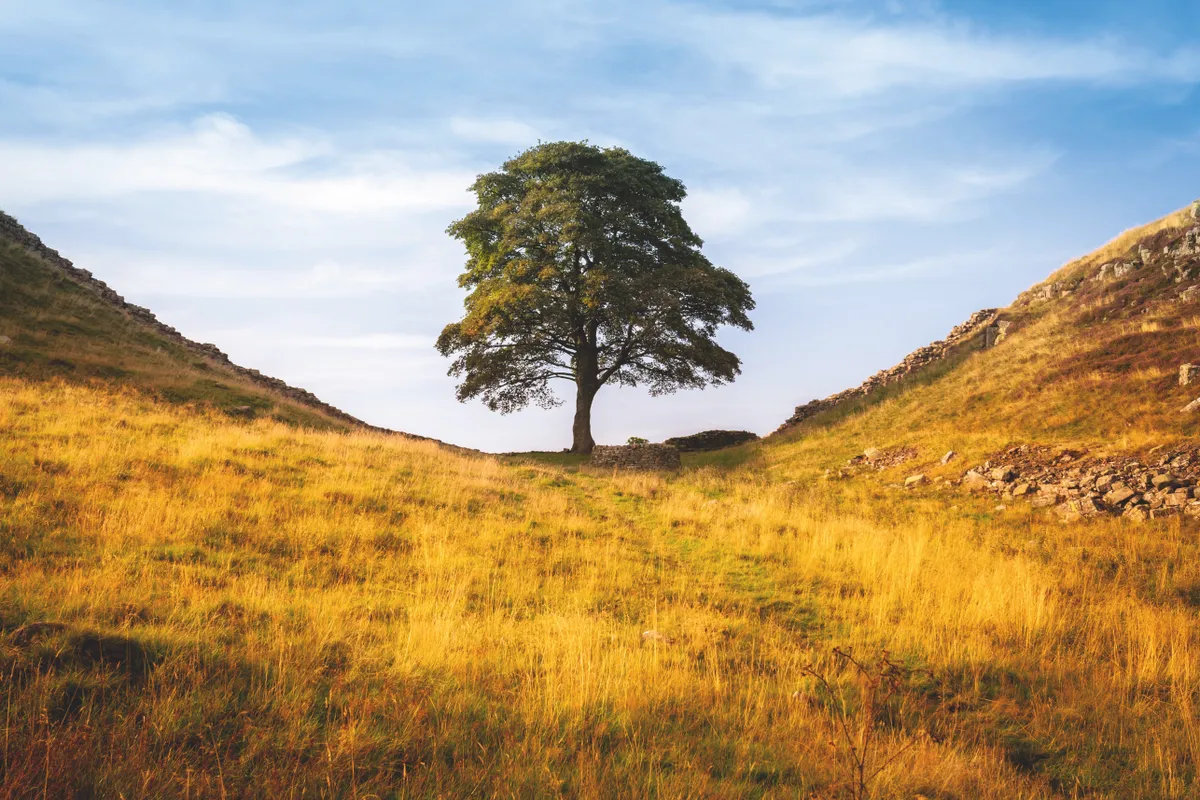
Greenlee Lough
5.5 miles/8.8km | 3 hours | moderate
Lying to the north of the Great Whin Sill, and easily visible from Hadrian’s Wall, Greenlee Lough is the largest natural lake in Northumberland.

Things to see and do along Hadrian's Wall
Housesteads Roman Fort
Occupying almost the exact mid-position on the wall, Housesteads Fort, perhaps more than any other comparable site, allows you to imagine what life would have been like for soldiers stationed on the wall. Imagination is aided by the newly refurbished English Heritage Museum that stands alongside the remains of the fort, and is reached by a short uphill walk from the National Trust visitor centre. The museum houses a multimedia exhibition with interactive displays and a collection of artefacts that have been unearthed at the site and that illustrate all aspects of life at this outpost of Empire.
Within the walls of the fort, the first ruins you enter are those of the hospital, and east of these, the headquarters. To the north lie the granaries, the floors of which stood on pillars that allowed ventilation. Continuing east are the barrack blocks, which housed up to 80 men in each room. The south-east corner is occupied by the best preserved communal latrines of any Roman fort in Britain. Toilet shyness must have been alien to a Roman soldier.
Running south, down the hillside, are the remains of a settlement that housed civilians who serviced and traded with the fort. Look for the Murder House, wheretwo bodies were found whose deaths aroused suspicions. One of them had the point of a knife lodged between his ribs.
Hadrian’s cycleway
Cycle along the 174-mile Hadrian’s cycleway, ride the sea-to-sea route (from the Irish to the North Sea) or try the Pennine Cycleway along the backbone of England. Whatever your preferred mode of transport – feet or wheels – there is a glut of history to suck in along the way.
You should make a short excursion along the Hadrian’s Wall Path to the west of the fort. It leads through a narrow strip of woodland, from which there are extensive views across wild country to the bleakly beautiful Broomlee Lough, which has provided inspiration for many a legend. To the south, the views are even more panoramic, ranging from Grindon Lough and Muckle Moss and over the Tyne Valley to the Pennines.
Hadrian's Wall Path National Trail
The Hadrian's Wall Path National Trail is an 84 mile trek through rugged moorland, rolling fields and urban landscape – quite something in terms of contrasting scenery.
Twice Brewed Inn
The Twice Brewed Inn is long, thin and welcoming. The menu features spicy burgers hewn from vast Northumbrian sausages, and the ales are drawn from the area’s countless microbreweries. As John Scott, of the Hadrian’s Wall Trust, once told me, “the pubs around here know their audience – they lay on big fires, big meals and big beers”. That sums up the Twice Brewed perfectly.
There are also vague echoes of local history. The pub operates a wetland sewage system that filters its waste water and sewage into clean water that is returned to the local landscape via willow beds. The idea came after the discovery of a sewage system that pre-dated the Romans.
But what about the name? Pleasingly, there is no simple answer. Apart from the tiny settlement of Once Brewed you pass on the walk, there’s a miniscule community answering to the name of East Twice Brewed just down the road. The riddle seems to involve soldiers seeking stronger beer (brew it twice), a watchful and abstemious landowner (brew tea, once) and much else besides. You can try and unpick it all from the account by the pub door.
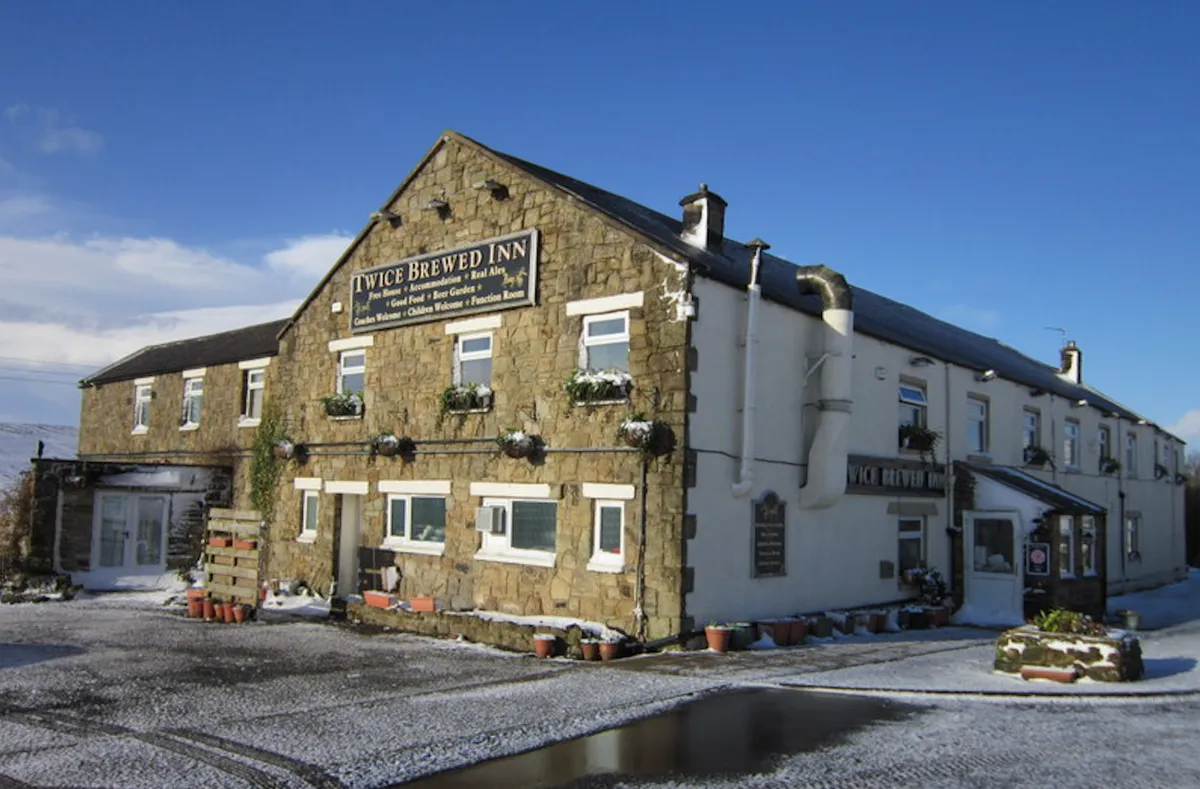
Vindolanda
This Roman fort complements Housesteads. Follow the A69 from Newcastle. For Vindolanda, turn at the village of Bardon Mill. Newcastle Central is served by major stations, and buses run from the city centre to sites along the wall.
Vindolanda
Bardon Mill, Hexham
NE47 344277
www.vindolanda.com
The Hearth Café
Cosy café that’s also a hub for local artists.
Main Road, Horsley
NE15 0NT
01661 852545
www.thehearth.co.uk
Battlesteads Hotel
Award-winning pub, hotel and restaurant.
Wark on Tyne, Hexham
NE48 3LS
01434 230209
www.battlesteads.com
Alnwick Castle
Beautiful castle with 700 years of history to uncover.
Alnwick, Northumberland
NE66 1NQ
01665 511350
www.alnwickcastle.com
